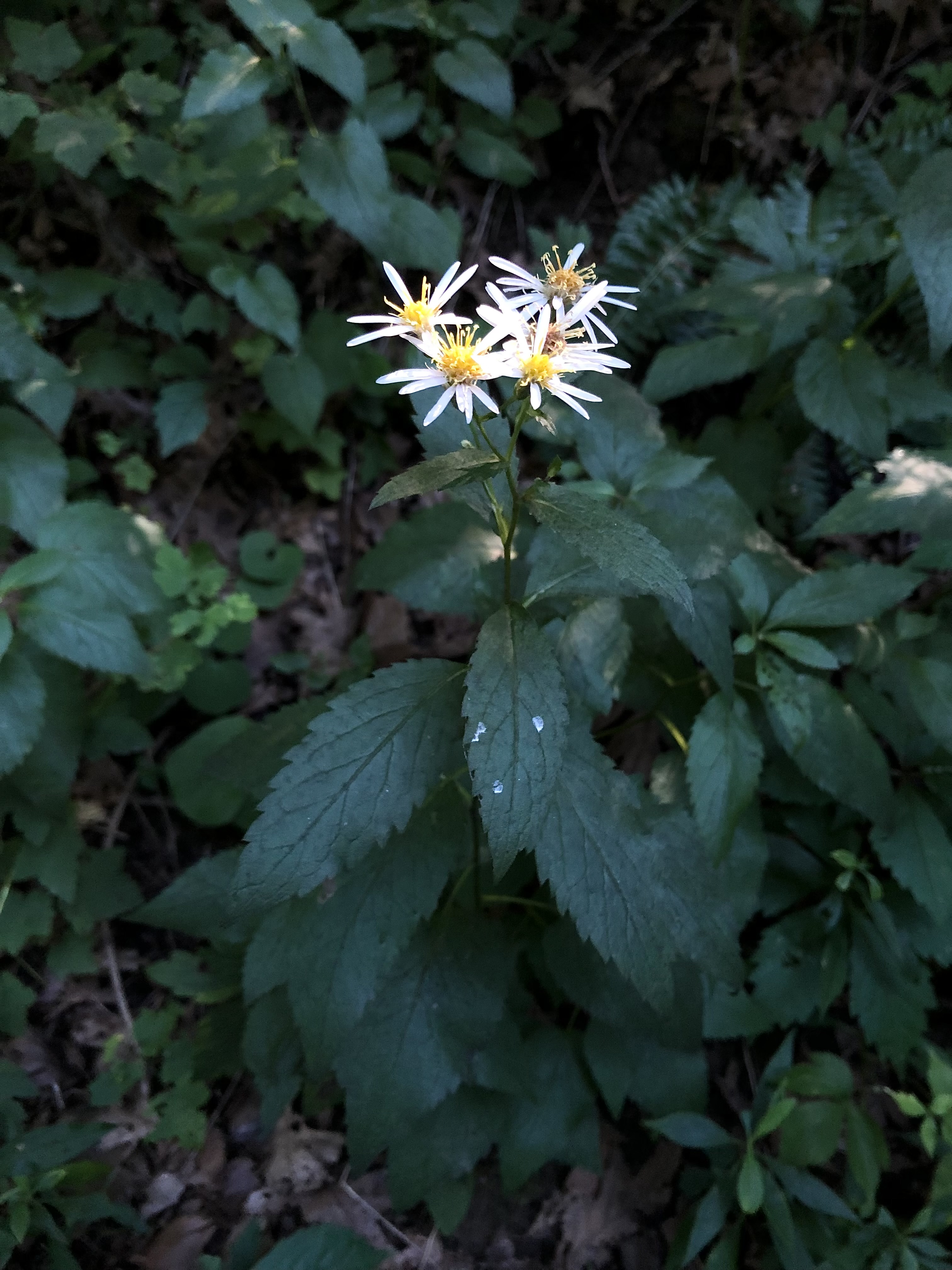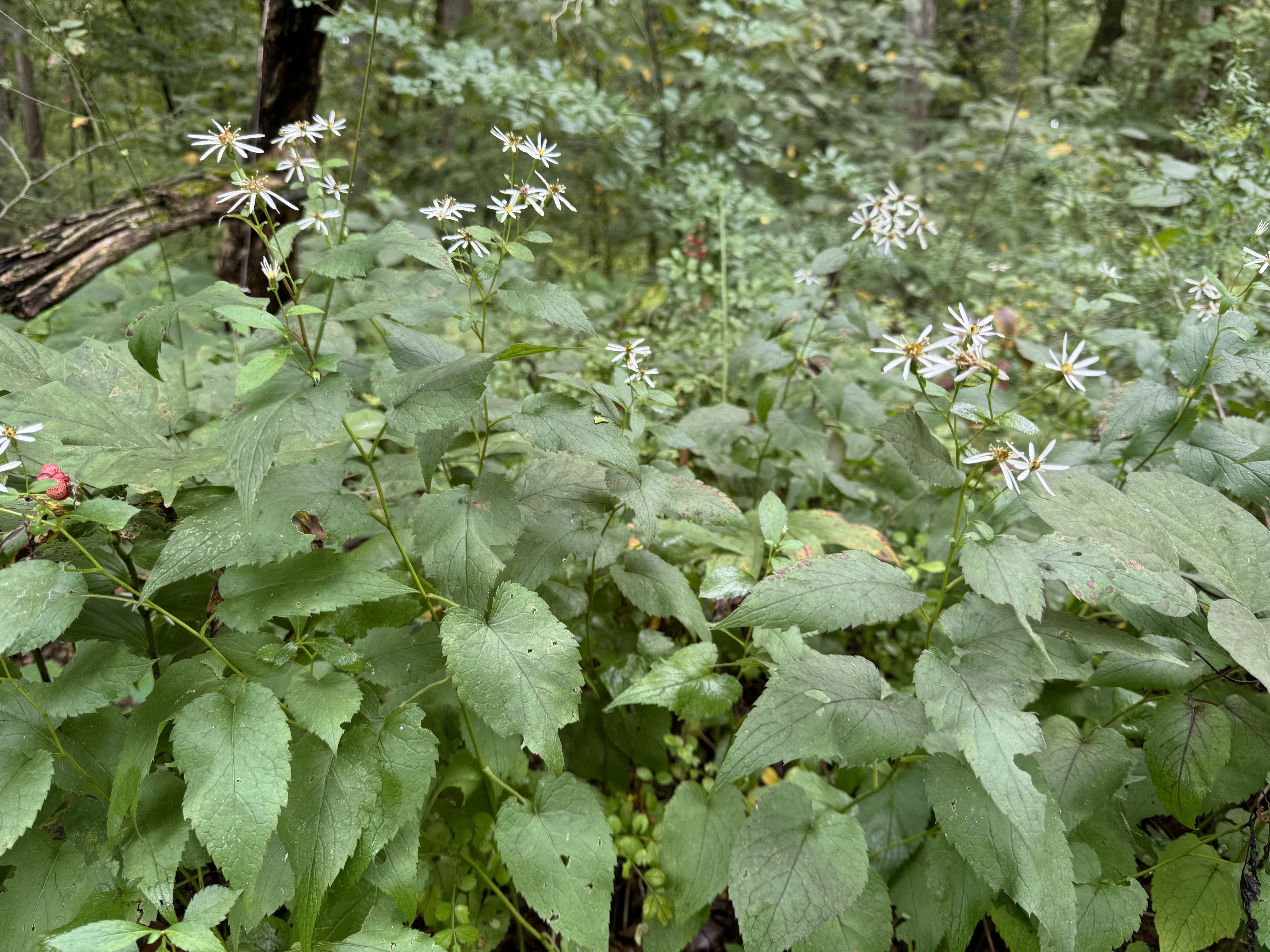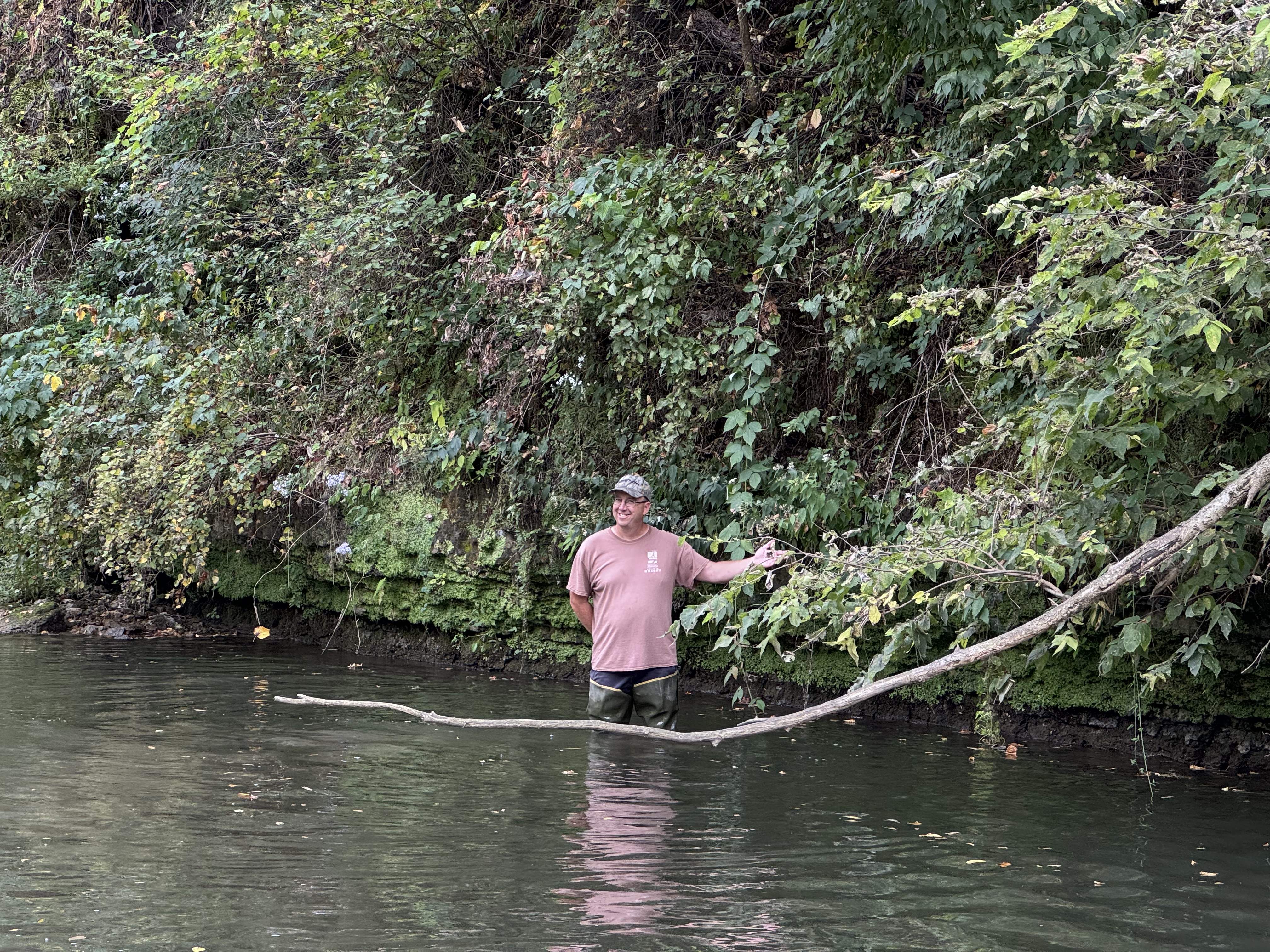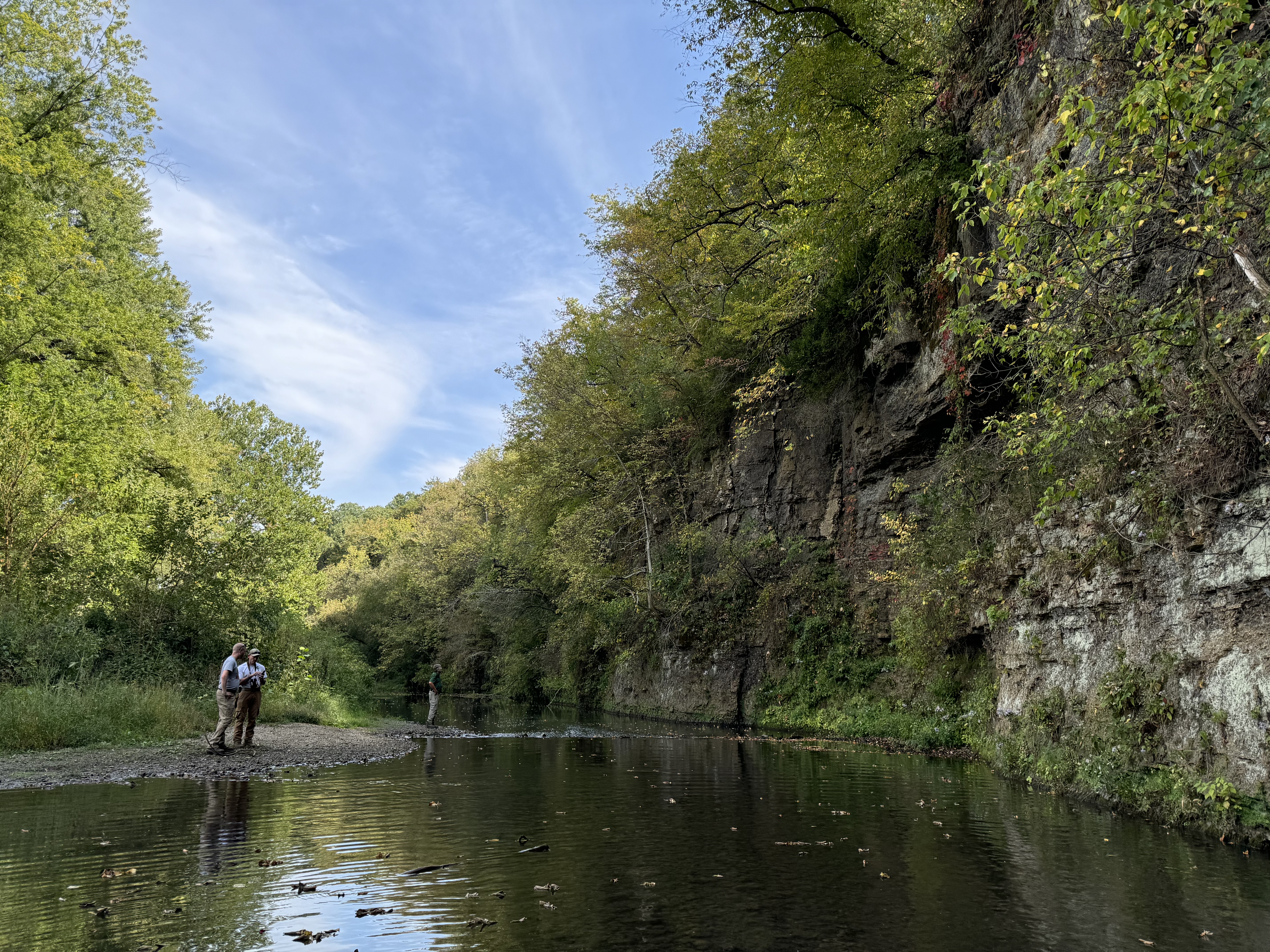
Image Credit: Grant Fessler
This fall in Northwest IL, Eurybia furcata (forked aster) was a top priority for Plants of Concern monitoring. This stunning, white-flowered aster is a regional endemic where it is known from only seven states: Arkansas, Illinois, Indiana, Iowa, Michigan, Missouri, and Wisconsin. NatureServe has ranked it G3 (Globally Vulnerable), and it is of conservation concern in all states where it is found. Unfortunately, populations of forked aster have suffered from various factors including development, alterations in hydrology, canopy closure, invasive species, and fire cessation. Luckily, many occurrences of this species in northern Illinois occur on protected land. However, some populations had not been documented or searched for in several decades.
 Eurybia furcata in bloom on edge of rich, mesic forest.
Eurybia furcata in bloom on edge of rich, mesic forest.
Plants of Concern staff collaborated with partners including the Illinois Department of Natural Resources, Byron Forest Preserve District, and Boone County Conservation District to refind this species on preserved land. In total, nine occurrences of this species were monitored this year, five of which were re-found historic populations. Most of these historic occurrences had not been seen since the 1970s, and one population hadn’t been documented since 1942! Out of seven total historic populations searched for, only one was not found. In addition, two new populations were documented, one of which was a county record occurrence in Rock Island County.
 IDNR Heritage Biologist Jeff Horn rejoicing in his discovery of a historic population of Eurybia furcata growing on a dolomite cliff.
IDNR Heritage Biologist Jeff Horn rejoicing in his discovery of a historic population of Eurybia furcata growing on a dolomite cliff.
Forked aster is often noted as being shade intolerant, a reality that was supported by numerous field observations this year. In fact, it was almost exclusively encountered in areas of part shade such as canopy openings, forest edges, riverbanks, cliffs, and trail/roadsides. Management activities such as canopy thinning, prescribed fire, and invasive species removal will undoubtedly be necessary for the forked aster’s survival. By refinding numerous occurrences and connecting land managers to their populations, we are excited and hopeful about the next steps in the species’ preservation in northwest Illinois.
 Rare plant monitors gazing up at a population of Eurybia furcata growing on a seepy, north-facing cliff face.
Rare plant monitors gazing up at a population of Eurybia furcata growing on a seepy, north-facing cliff face.
Article and photos by Grant Fessler.